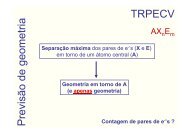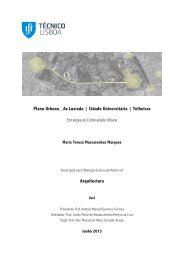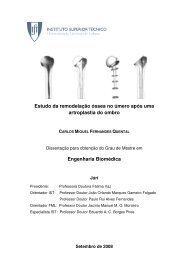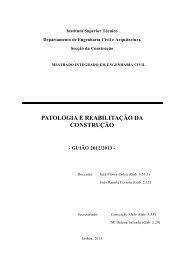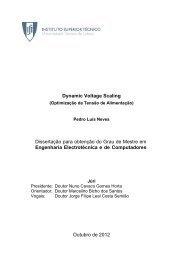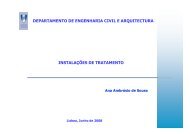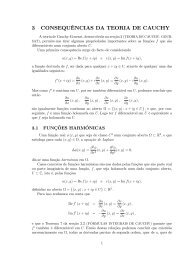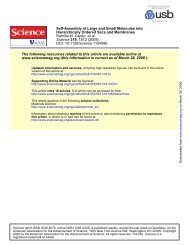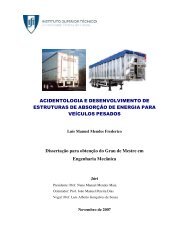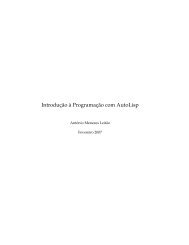dissertacao.pdf
dissertacao.pdf
dissertacao.pdf
Create successful ePaper yourself
Turn your PDF publications into a flip-book with our unique Google optimized e-Paper software.
So the monic polynomial of degree 9 given by<br />
fN (x) = x 9 +(3c1 −3c2)x 6 +(3c 2 1 +21c1c2 +3c 2 2)x 3 +(c1 −c2) 3<br />
(mod N) (52)<br />
has a root x0 = b. As b < N 1<br />
9 , we can use Coppersmith’s theorem to<br />
compute b. Once we know the value of b, we simply need to apply the at-<br />
tack described in the previous section for related messages. All computations<br />
are done in time polynomial in log(N).<br />
So it is essential to use a sufficiently large random padding.<br />
3.3.4 Leaking Information<br />
When we implement an RSA cryptosystem, the encryption and decryption ex-<br />
ponents satisfy the so called key equation ed = 1+kφ(N), where k is a constant<br />
which should be kept secret. One of the reasons for this is presented below.<br />
Boneh, Durfee and Frankel [10] [15] showed that, knowing k, Marvin can<br />
find some of the most significant bits of the decryption exponent:<br />
Theorem 27. Let < e, N > and < d, p, q, N > be a pair of public/private keys<br />
satisfying the key equation ed = 1 + kφ(N). Then, knowing < e, N > and k, we<br />
can compute d1 such that |d1 − d| < p + q in time polynomial in log(N).<br />
Proof. Set d1 = ⌈ 1<br />
e (1 + kN)⌋. So d1 = 1<br />
e<br />
|α| < 1. Rewriting the key equation:<br />
where s=p+q-1, we can compute:<br />
1 + kN<br />
|d1 − d| = | + α −<br />
e<br />
(1 + kN) + α for some α such that<br />
ed = 1 + kφ(N) ⇔ ed = 1 + k(N − s) (53)<br />
1 + k(N − s)<br />
| = |<br />
e<br />
ks<br />
+ α| < s + 1 = p + q. (54)<br />
e<br />
When we use balanced primes to generate the modulus, the inequality<br />
p + q > 3 1<br />
2N 2 holds. This means that given only the public key and k, we<br />
can always compute d1 : |d1 − d| < 3<br />
2<br />
most significant bits of the private exponent.<br />
N 1<br />
2 . This means that we know half of the<br />
We still need to explain why this attack is considered a small public exponent<br />
attack. The reason for this is that we usually have no information at all about<br />
the constant k in the key equation but, when e = 3, we need to have k = 2 The<br />
following result is taken from [4].<br />
45



